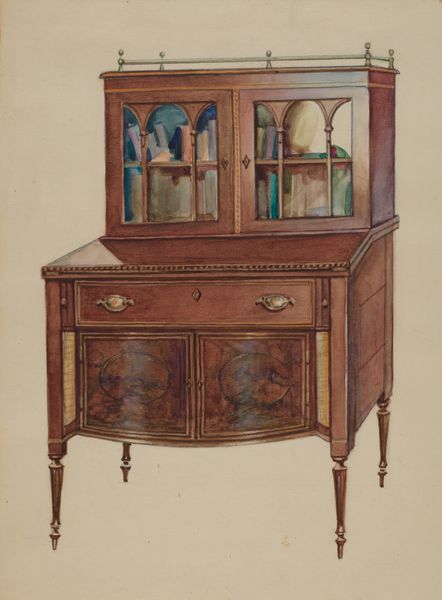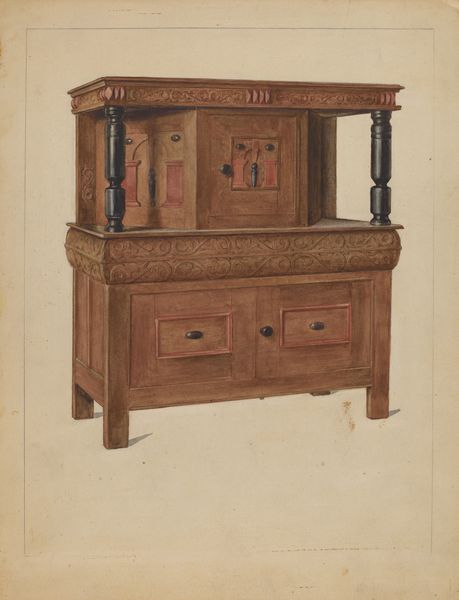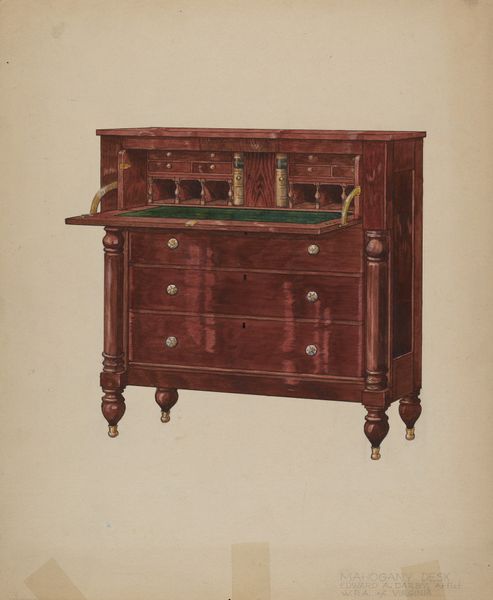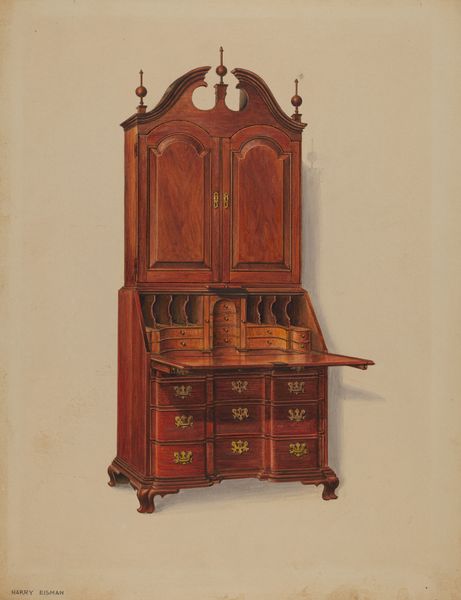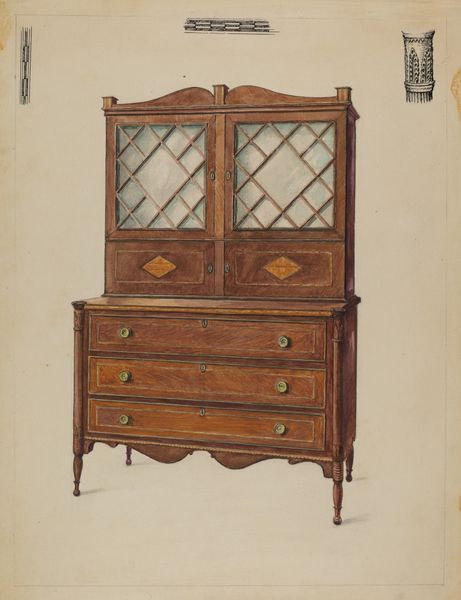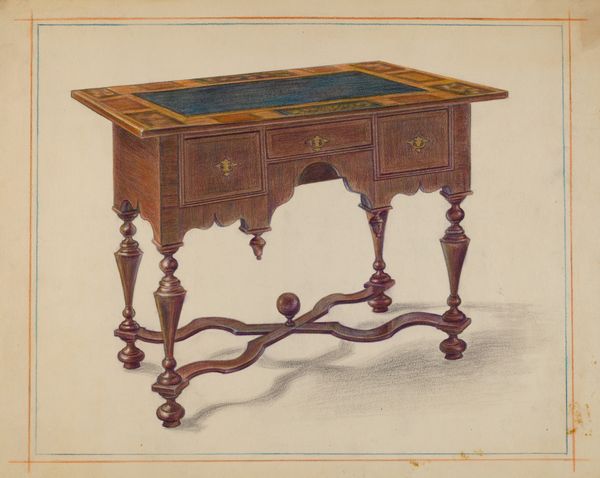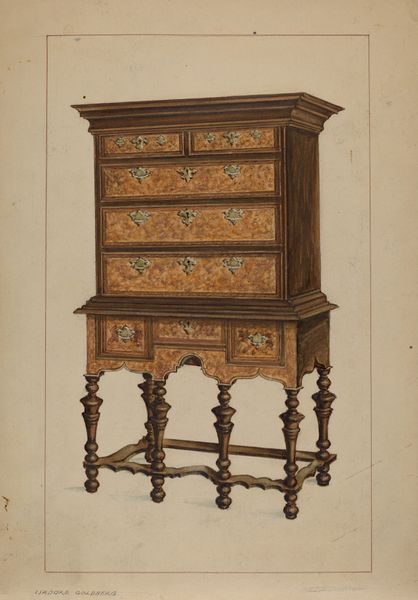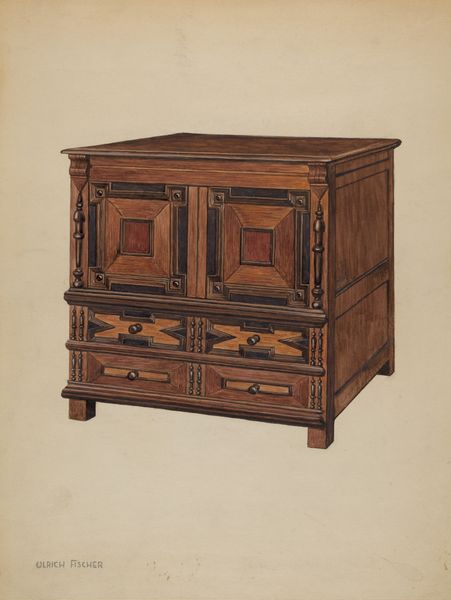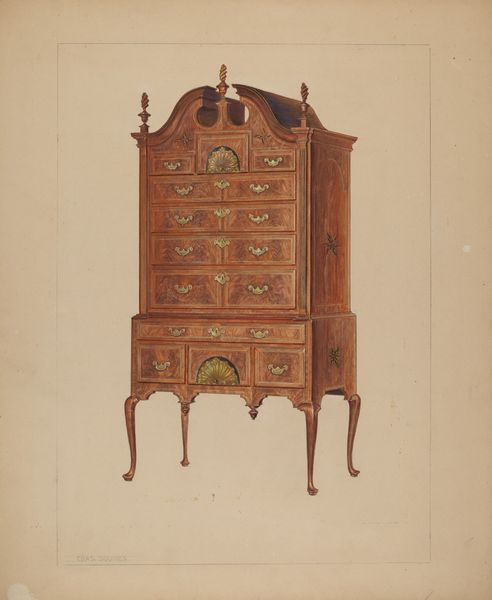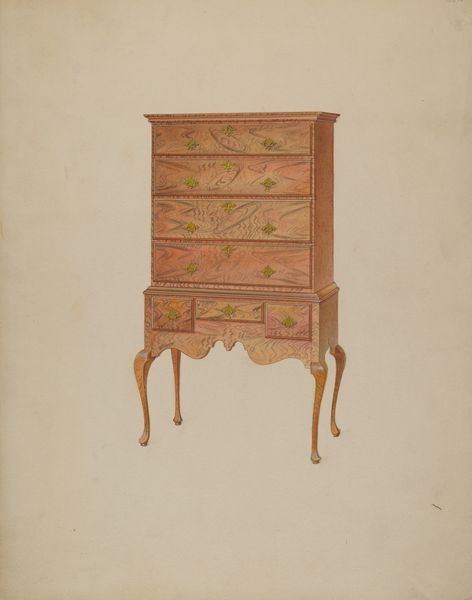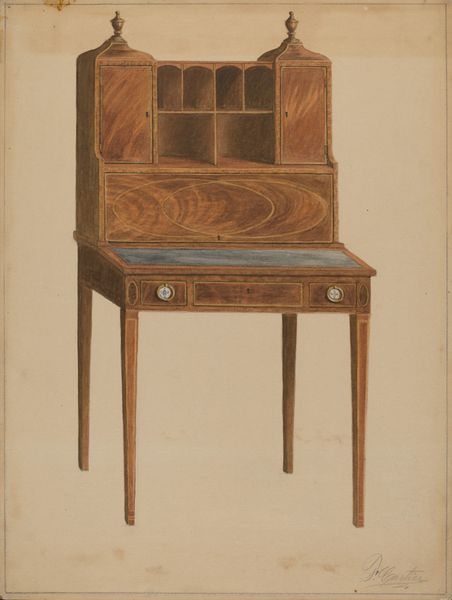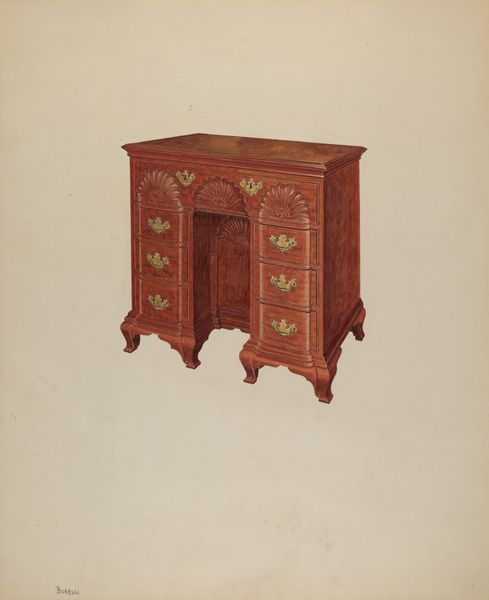
drawing, painting, paper, watercolor
#
drawing
#
water colours
#
painting
#
paper
#
watercolor
#
coloured pencil
#
geometric
Dimensions: overall: 30.4 x 22.9 cm (11 15/16 x 9 in.) Original IAD Object: none given
Copyright: National Gallery of Art: CC0 1.0
Curator: Well, the first thing that strikes me is the delicate melancholy radiating from this rendering. It's such an intimate portrayal. Editor: Indeed. What we're looking at is "Mahogany Desk with Bookcase Top," crafted by George Loughridge in 1936. It's rendered on paper using watercolor and colored pencil, a design blueprint almost. Curator: Absolutely. Blueprints aren’t typically intended as emotive objects, and I think the fact this design rendering feels quite so serene hints at something much deeper. The objects inside the cabinet are shrouded. There's this desire for knowledge, kept just beyond reach. What kind of space was Loughridge trying to construct? Editor: That's interesting. Loughridge made this design during the height of the Great Depression. The elegance on display here may appear jarring in its historical context. There's a strange dichotomy— an assertion of order and refined living against the realities of widespread economic suffering. How should we interpret the implied values behind this work of functional art? Curator: Maybe this is a symbol of hope amid desolation, then, perhaps even a form of resistance against despair? What resonates most is the harmony created between rigid lines and soft coloration, echoing aspiration itself, realized with a calm sensibility that acknowledges hardship but leans toward enduring optimism. Editor: The very deliberate rendering of such a classical design—its curves and refined structure—it perhaps speaks to the enduring value of artistry in times of adversity. Beauty as a lifeline? Curator: It feels intensely private too. Editor: Almost devotional in presentation. This feels like less of a hard sell of utility and more of a statement of cultural importance, the kind of continuity that asserts that better days will arrive. I wonder, ultimately, who this quiet proclamation was for. Curator: In essence, Loughridge created a hopeful vision in the language of design. Editor: A fascinating snapshot. I’m grateful to have the opportunity to explore the object and period it evokes.
Comments
No comments
Be the first to comment and join the conversation on the ultimate creative platform.
